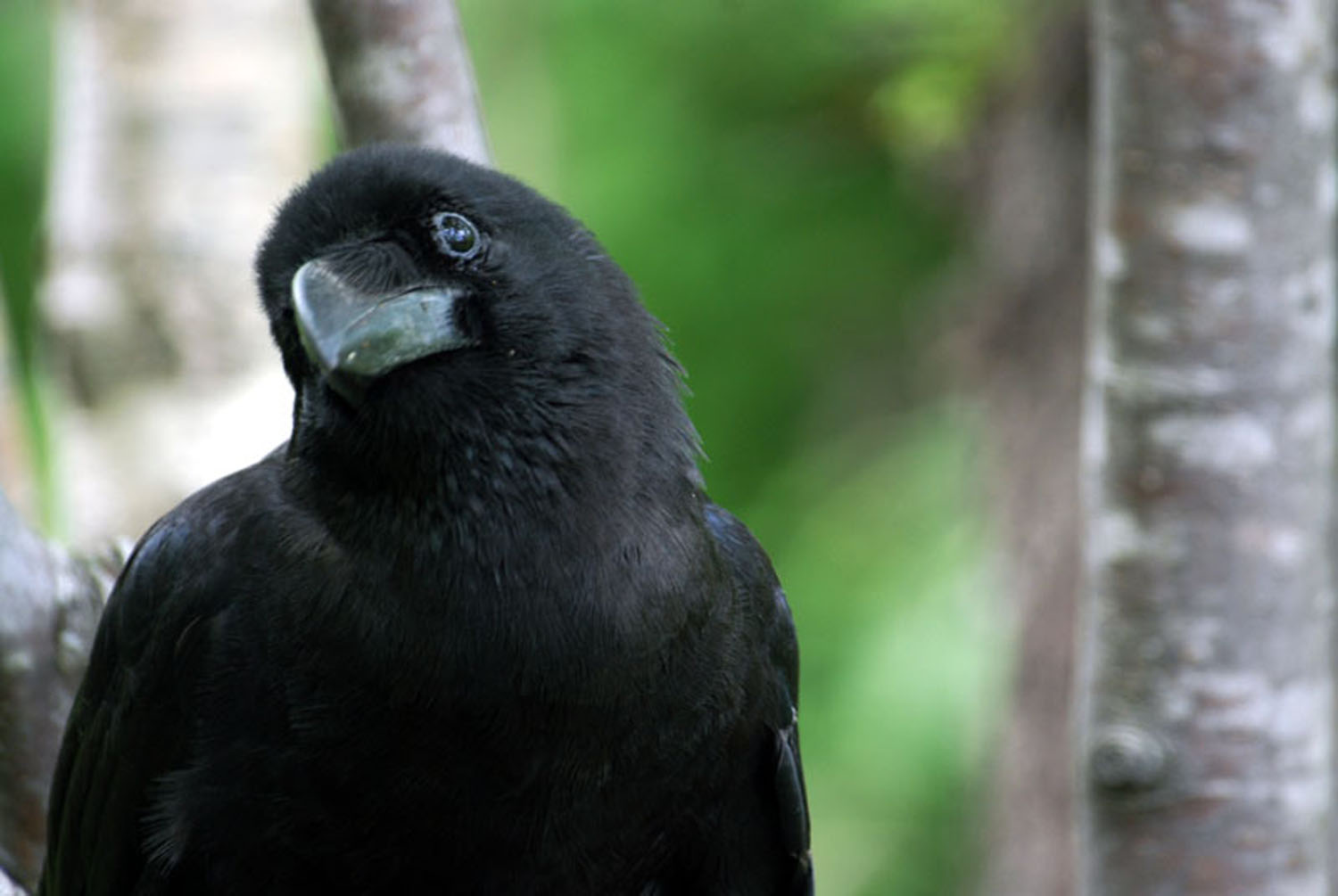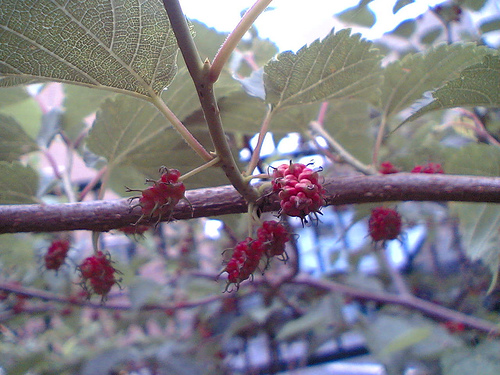ハシブトガラス
めったに撮ることの出来ないハシブトガラス。
動きに敏感で、出来るだけ近づこうとしても、直ぐに飛んでしまう。
今回は珍しく、じっと動かないでいてくれた。
一羽でヤマグワの実などを食べていたので、私が離れるのを待っていたのだろうか。
愛嬌のある顔であると感じたが、敏感で人を襲うカラスとは思えなかった。
It is very unusual to see the HASHIBUTO GARASU [Corvus macrorhynchos]; she is very sensitive and cautious and flies away if you try to get close. This time, however, she stood still for my photo – which is a rare occurrence. Alone, she was eating the fruit of the YAMAGUWA tree, and paused, as if she were waiting for me to leave so she could continue with her feast. Her expression was so innocent and charming – it’s difficult to imagine that she will attack humans.
 photo by Eiji Nishiya
photo by Eiji Nishiya
The YAMAGUWA [Morus bombycis] or wild mountain mulberry has a prehistoric connection to humans. The use of mulberries has a long history in Japan, traceable to Jomon times. The fruit can be eaten or made into wine. The tree flowers in April to June with leaves; false fruits ripen from red to black in June to July. This mulberry is one of the most-common trees in Japan and is cultivated for feeding silkworms. The wood, hard and heavy, is used for furniture, cabinet work, inlaid works, and sculptures.








